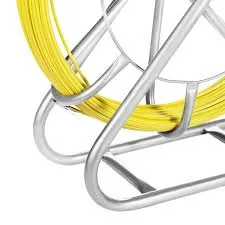
-
 Afrikaans
Afrikaans -
 Albanian
Albanian -
 Amharic
Amharic -
 Arabic
Arabic -
 Armenian
Armenian -
 Azerbaijani
Azerbaijani -
 Basque
Basque -
 Belarusian
Belarusian -
 Bengali
Bengali -
 Bosnian
Bosnian -
 Bulgarian
Bulgarian -
 Catalan
Catalan -
 Cebuano
Cebuano -
 Corsican
Corsican -
 Croatian
Croatian -
 Czech
Czech -
 Danish
Danish -
 Dutch
Dutch -
 English
English -
 Esperanto
Esperanto -
 Estonian
Estonian -
 Finnish
Finnish -
 French
French -
 Frisian
Frisian -
 Galician
Galician -
 Georgian
Georgian -
 German
German -
 Greek
Greek -
 Gujarati
Gujarati -
 Haitian Creole
Haitian Creole -
 hausa
hausa -
 hawaiian
hawaiian -
 Hebrew
Hebrew -
 Hindi
Hindi -
 Miao
Miao -
 Hungarian
Hungarian -
 Icelandic
Icelandic -
 igbo
igbo -
 Indonesian
Indonesian -
 irish
irish -
 Italian
Italian -
 Japanese
Japanese -
 Javanese
Javanese -
 Kannada
Kannada -
 kazakh
kazakh -
 Khmer
Khmer -
 Rwandese
Rwandese -
 Korean
Korean -
 Kurdish
Kurdish -
 Kyrgyz
Kyrgyz -
 Lao
Lao -
 Latin
Latin -
 Latvian
Latvian -
 Lithuanian
Lithuanian -
 Luxembourgish
Luxembourgish -
 Macedonian
Macedonian -
 Malgashi
Malgashi -
 Malay
Malay -
 Malayalam
Malayalam -
 Maltese
Maltese -
 Maori
Maori -
 Marathi
Marathi -
 Mongolian
Mongolian -
 Myanmar
Myanmar -
 Nepali
Nepali -
 Norwegian
Norwegian -
 Norwegian
Norwegian -
 Occitan
Occitan -
 Pashto
Pashto -
 Persian
Persian -
 Polish
Polish -
 Portuguese
Portuguese -
 Punjabi
Punjabi -
 Romanian
Romanian -
 Russian
Russian -
 Samoan
Samoan -
 Scottish Gaelic
Scottish Gaelic -
 Serbian
Serbian -
 Sesotho
Sesotho -
 Shona
Shona -
 Sindhi
Sindhi -
 Sinhala
Sinhala -
 Slovak
Slovak -
 Slovenian
Slovenian -
 Somali
Somali -
 Spanish
Spanish -
 Sundanese
Sundanese -
 Swahili
Swahili -
 Swedish
Swedish -
 Tagalog
Tagalog -
 Tajik
Tajik -
 Tamil
Tamil -
 Tatar
Tatar -
 Telugu
Telugu -
 Thai
Thai -
 Turkish
Turkish -
 Turkmen
Turkmen -
 Ukrainian
Ukrainian -
 Urdu
Urdu -
 Uighur
Uighur -
 Uzbek
Uzbek -
 Vietnamese
Vietnamese -
 Welsh
Welsh -
 Bantu
Bantu -
 Yiddish
Yiddish -
 Yoruba
Yoruba -
 Zulu
Zulu


Sep . 10, 2024 07:57 Back to list
Installing a Ground Rod - Essential Guide for Proper Grounding
Installing a Ground Rod A Step-by-Step Guide
Grounding is a critical safety measure in electrical installations, helping to protect people and equipment from electrical faults. One of the most effective methods to achieve a reliable ground is by installing a ground rod. This article provides a detailed guide on how to properly install a ground rod for your home or facility.
Understanding the Purpose of a Ground Rod
A ground rod serves as a physical connection to the earth, directing stray electrical currents safely into the ground. This is essential for preventing electrical shock hazards and ensuring that electrical systems function correctly. Ground rods are typically made of copper or galvanized steel, and they must meet local electrical codes regarding installation depth and grounding resistance.
Tools and Materials Needed
To install a ground rod, you will need several tools and materials, including - A ground rod (usually 8 to 10 feet long) - A ground rod clamp - A hammer or post driver - A wire cutter/stripper - Copper or aluminum grounding wire (appropriate gauge) - A shovel or auger (if necessary) - Safety gear (gloves, goggles)
Step 1 Choose an Appropriate Location
Selecting the right location for your ground rod is crucial. Ideally, it should be placed near your main electrical panel and in an area of moist, undisturbed soil. Avoid placing it under large trees or near underground utility lines. Ensure you check local codes and regulations regarding ground rod placement.
Step 2 Drive the Ground Rod into the Ground
installing a ground rod

Once you have identified the location, it's time to install the ground rod. Using a hammer or post driver, drive the rod vertically into the ground until only a few inches remain above the surface. In rocky or hard soil, you may need to use a shovel or auger to create a hole before inserting the rod.
Step 3 Connect the Ground Wire
After the rod is securely in place, it's time to connect the grounding wire. Using a ground rod clamp, attach one end of the copper or aluminum grounding wire to the rod. Ensure that the connection is tight and secure to maintain good conductivity. The other end of the grounding wire should be connected to your electrical panel's ground bus bar.
Step 4 Test the Grounding System
Once the installation is complete, it's vital to test the grounding system to ensure it functions correctly. You can use a multimeter or a dedicated ground tester to measure the resistance of the ground connection. A resistance value of 25 ohms or less is typically considered acceptable, although the ideal value may vary based on local regulations.
Step 5 Backfill and Clean Up
Finally, backfill any holes you have created, ensuring the area around the ground rod is neat and safe. Properly dispose of any debris and ensure safety standards are adhered to.
Conclusion
Installing a ground rod is an essential task that enhances the safety and reliability of your electrical system. By following this guide and adhering to local electrical codes, you can ensure that your installation is effective and secure. Remember, electrical work can be hazardous; if you're unsure about any steps in the process, it's always wise to consult with a licensed electrician. Grounding is not just a requirement; it’s a foundational principle of electrical safety that protects both lives and property.
Latest news
What Are Construction Tools and How Are They Used?
NewsJul.11,2025
Professional-Grade Duct Rodding Tools for Superior Cable Installation
NewsJul.11,2025
Enhancing Safety and Efficiency with Modern Hot Stick Solutions
NewsJul.11,2025
Empowering Cable Installation with Advanced Rodder Solutions
NewsJul.11,2025
Elevate Your Cable Installation Projects with Cable Pulling Tools
NewsJul.11,2025
Efficient Cable Handling Solutions: Cable Rollers for Sale
NewsJul.11,2025











